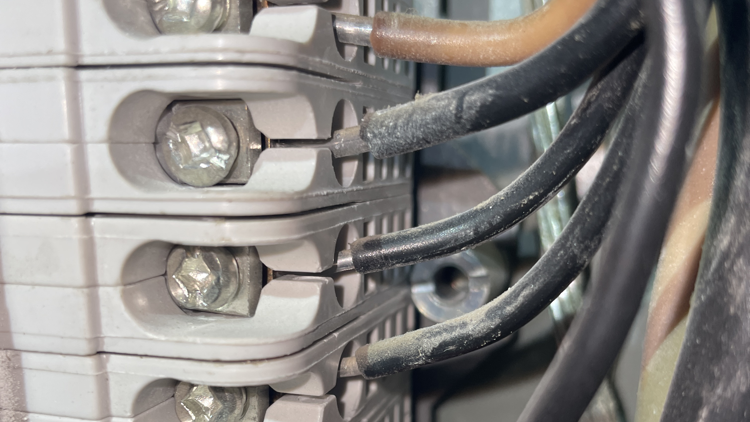When inspecting homes, one of the critical components we evaluate is the electrical system. Among various elements, the wiring materials can reveal a lot about the safety and efficiency of the home’s electrical infrastructure. One material that often raises eyebrows is solid aluminum conductors. Let’s dive into what these are, their history, potential issues, and what you should consider if you encounter them during a home inspection.
What are Solid Aluminum Conductors?
Solid aluminum conductors refer to electrical wiring made from aluminum rather than the more commonly used copper. This type of wiring was predominantly used in residential construction during the 1960s and early 1970s due to the high cost and shortage of copper at the time.
Historical Context
During the post-World War II housing boom, the demand for affordable housing surged. Copper prices skyrocketed, prompting builders and electricians to seek alternative materials. Aluminum emerged as a viable option because it was both abundant and less expensive. However, while aluminum conducts electricity almost as well as copper, it has different physical properties that can pose unique challenges.
Potential Issues with Solid Aluminum Wiring
1. Oxidation and Corrosion
- Aluminum wiring is prone to oxidation. When aluminum wire oxidizes, it forms a layer of aluminum oxide that increases resistance, leading to potential overheating and fire hazards.
2. Thermal Expansion
- Aluminum expands more than copper when heated. This can cause the wiring to creep (a gradual deformation under mechanical stress), potentially leading to loose connections. Loose connections can result in arcing and, ultimately, electrical fires.
3. Connection Problems
- Aluminum wiring has compatibility issues with standard copper connectors. Using improper connectors can lead to high-resistance connections and increased fire risk.
4. Brittleness
- Over time, aluminum can become brittle and break more easily than copper, especially when subjected to repeated bending or movement.

Identifying Solid Aluminum Wiring
As a home inspector, identifying aluminum wiring is a critical skill. Here’s how you can spot it:
- Visual Inspection: Look for markings on the wire insulation. Aluminum wiring is typically labeled with “AL” or “ALUM.”
- Service Panels: Check the service panel for aluminum branch wiring, particularly in homes built or renovated during the 1960s and 1970s.
- Outlet and Switch Boxes: Inspect outlets and switch boxes for the presence of aluminum wires.
Safety Concerns and Mitigation
While solid aluminum conductors can be safe if properly installed and maintained, they do pose significant risks. Here are some mitigation strategies:
1. Rewiring
- The most comprehensive solution is to replace aluminum wiring with copper. While costly, this greatly reduces the risk of electrical issues and is often the safest long-term solution.
2. Aluminum-Compatible Connectors
- Using connectors specifically designed for aluminum wiring, such as COPALUM crimps or AlumiConn connectors, can mitigate some risks. These connectors are designed to handle the expansion and contraction of aluminum wiring safely.
3. Routine Inspection and Maintenance
- Regular inspections by a licensed electrician can identify and address potential problems before they become serious. Ensuring that all connections are tight and that there is no evidence of overheating or corrosion is crucial.
4. Pig-Tailing
- Another approach is pig-tailing, where short lengths of copper wire are connected to aluminum wires at outlets and switches, using special connectors. This allows for safer connections with standard devices.
Insurance considerations
Solid aluminum conductors can pose significant insurance implications for home buyers. When purchasing a home with this type of wiring, it is crucial to contact your home insurance company to discuss their policies regarding aluminum wiring. Currently, only some insurance companies offer policies for homes with aluminum wiring, and they may require an electrical inspection or even costly mitigation, before providing coverage.
Insurance company policies can change, and there might come a time when obtaining a new insurance policy for homes with aluminum wiring becomes difficult or impossible. Therefore, when we encounter aluminum wiring during a home inspection, we recommend that our clients understand the potential costs associated with replacing the wiring if it ever becomes necessary.
Being proactive about these issues can help you avoid unexpected expenses and ensure that your home remains insurable and safe.
If your buying or selling a home in the North Okanagan or Shuswap, give the pros at Argos Home Inspection a call. Come find out why we are quickly becoming the highest rated home inspection company and why our clients love what we do! Check out www.argoshome.ca or give us a call at 250-937-7754.


Leave a Reply